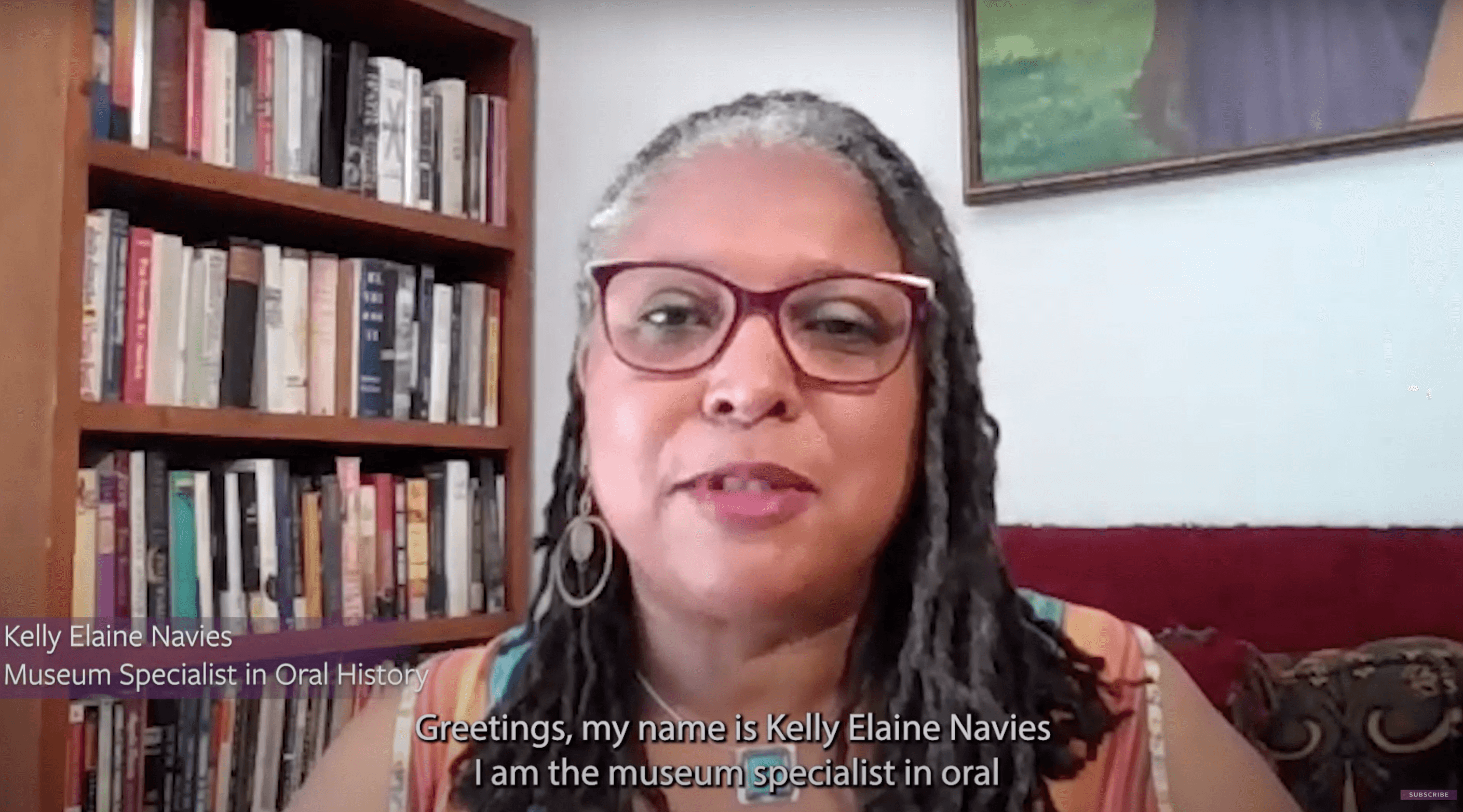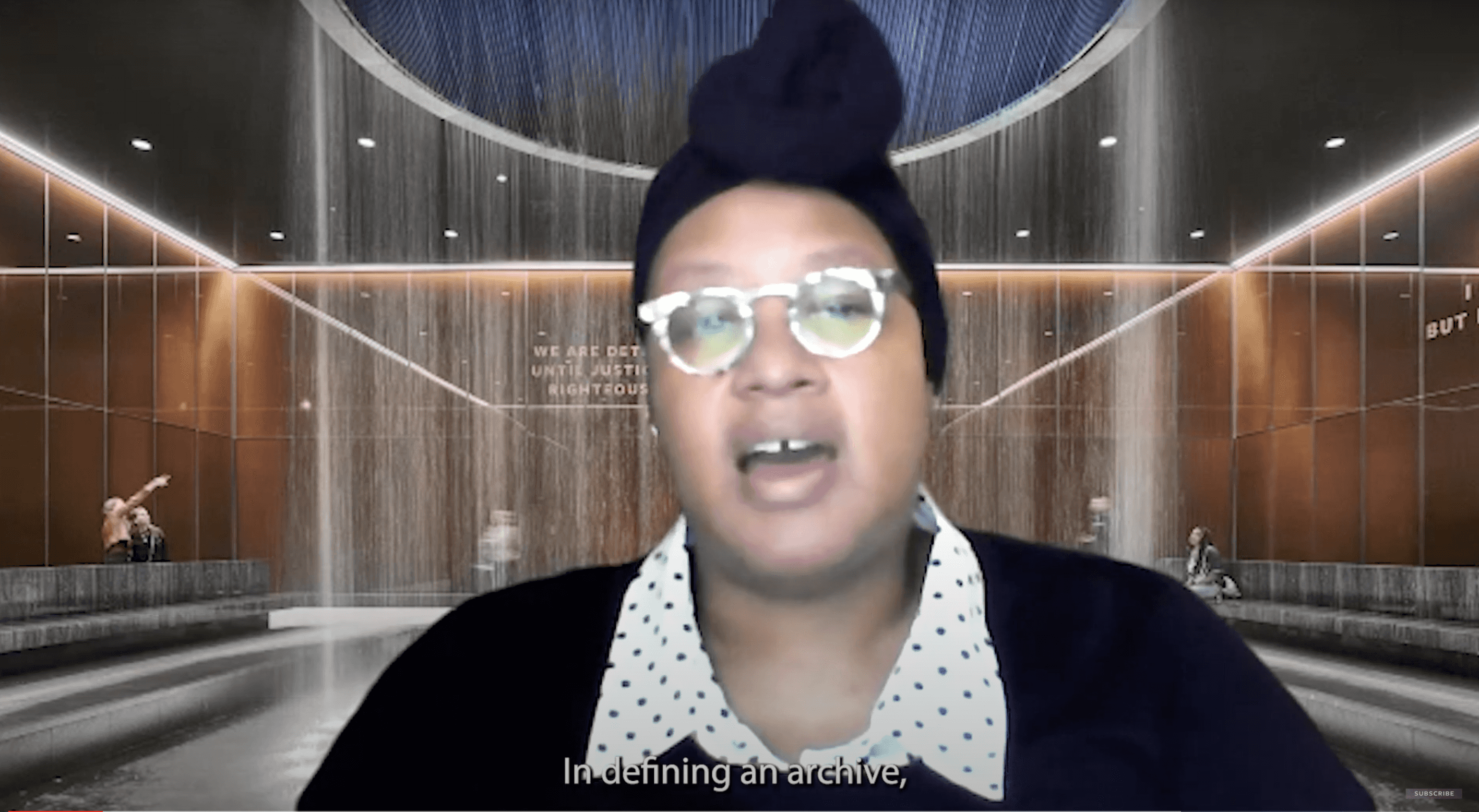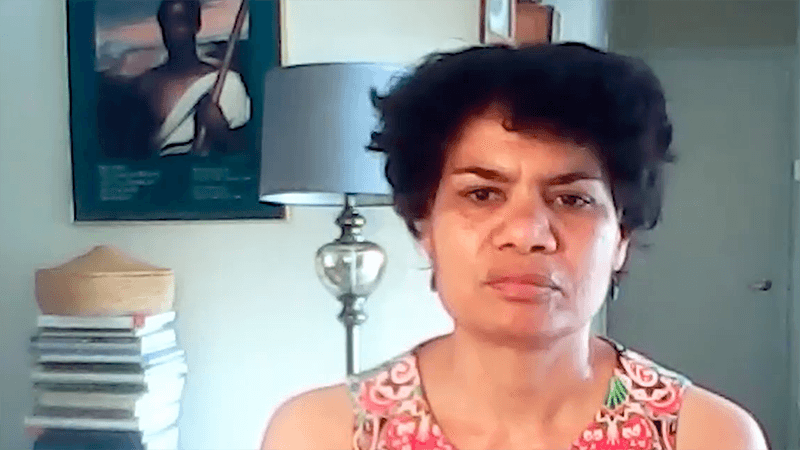How We Know What We Know
Methods, tools, and sources used to study African American history and culture
One thing has not changed. That is the need to draw inspiration and guidance from the past. And through that inspiration, people will find tools and paths that will help them live their lives.
Lonnie G. Bunch III, Secretary of the Smithsonian Institution and Founding Director of NMAAHC
History informs, engages, and empowers us. It reveals truths about our present and future. It is also challenged and contested and requires authentication. African American history is no exception. In fact, because African American history has been long discounted as not being recorded or tangible, the access to and rare nature of African American history often receives greater scrutiny.
African American history has been studied using traditional methodology, research, and sources. It has also pioneered new ways to consider the past, including oral history, conservation, family history, and more. Black scholars and practitioners who engaged in various methodologies and served as role models for later generations include historian Carter G. Woodson, linguist Lorenzo Dow Turner, museum founder Margaret Burroughs, genealogist Tony Burroughs, and scholar Joseph Harris.
The stories, images, and artifacts put forth in the National Museum of African American History and Culture's exhibitions are based on sound and accepted methodology and research that not only authenticate what is presented but also help to excite the learning in all of us.
Oral History
Remembering Enslavement
Oral history is a field of study and a method of gathering, preserving, and interpreting the voices and memories of people and communities. This methodology provides personal perspectives and reflections on key moments in history.
The African American practice of passing on knowledge through oral history can be traced back to the centuries-old griot traditions in West African cultures. While early African societies kept meticulous records, including the treasured Mali manuscripts, oral history was also considered an essential resource for preserving history.
Enslaved African people were denied the ability to read or write from the time they arrived in the western Atlantic colonies. They brought with them their memories, their knowledge, their skills, their cultural traditions, their faith, and much more. Information was passed down orally through the generations. Renowned author, researcher, and family historian Alex Haley stated, “When a griot dies, it is as if a library has burned to the ground.”
Oral histories have faced scrutiny regarding their credibility as historical sources but are now more widely accepted among scholars as a viable research tool. The preparedness of the interviewer, the questions asked, and the rapport between the interviewer and subject all impact the quality and accuracy of an oral history interview.
Today, repositories house treasure troves of oral histories of those who lived through and survived slavery, providing first-person accounts of work, family, the slave trade, communities, faith, culture, and more. The Library of Congress, for example, maintains the rich collection of the 1930s Works Progress Administration (WPA) Slave Narratives Project recordings—the largest effort to collect the voices and stories of formerly enslaved African Americans. Black voices humanize the history and tell the American story through an African American lens.
Featured Video
“What is Oral History?”
Kelly Navies, Museum Specialist of Oral History at NMAAHC, explains the importance of oral history in the study of African American history and culture.
Archaeology
Archaeology, a subfield of anthropology, is the study of human cultures—using site excavation, material culture analysis, cultural script and structures as tools for research and understanding. Archaeology may be conducted on land (terrestrial) or underwater (maritime). Archaeological research provides insight into the lived experiences of people and groups who did not leave behind a written record.
NMAAHC is a partner and host of the Slave Wrecks Project (SWP), an international collaborative project and cutting-edge effort to locate, study, and present the underwater sites of slavery associated with the Transatlantic Slave Trade network. The project convenes researchers, practitioners, and institutions who employ methodologies including maritime and terrestrial archaeology to take a distinct approach to the study of slave shipwrecks around the world. NMAAHC’s partners and collaborators include the George Washington University, National Park Service, Iziko Museums of South Africa, Diving With a Purpose, and the Society of Black Archaeologists.
Museum curators rely on the sound scholarship of archaeologists, whose work provides critical insight into the history of enslaved and free Black people in the United States and throughout the African Diaspora. Archaeology helps the Museum share the global history of slavery.
Today the field is looking at ways to close the racial gap and train a new cohort of archaeologists of color, and to identify, prioritize, and secure funding for projects focused on African Diasporic sites. The effort is also regarded as a tool for restorative justice and decolonization.
Kamau Sadiki, of Diving With a Purpose and the Slave Wrecks Project, works on a wreck site in Mobile, Alabama
Archives
African American Patriots
Archives contain a variety of documents, including receipts, wills, letters, service records, and land and tax records, among others. These materials are rich resources for piecing together the stories of past events and the lives of people who took part in them. Museums use archival material to enhance our knowledge of the past and to create more in-depth, engaging exhibitions.
African Americans are documented in archival records in a variety of ways – as authors and as subjects. In studying slavery, documents produced by formerly enslaved people—including slave narratives, abolitionist pamphlets, newspapers, and written speeches and sermons – provide Black perspectives from the periods of slavery and Reconstruction. Documents written about Black people by non-Black people, like the financial and personal records written by enslavers, provide another perspective, including their own observations and assumptions. Both types of sources help provide insight into the lived experiences of free and enslaved Black people.
Archival maps provide a lens into the physical spaces Black people occupied, giving us a sense of the terrain they would have encountered. These maps reveal proximity to water and land, the distance from nearby plantation sites where loved ones were held in bondage, and the routes through which individuals could have escaped. Plat maps – which show how property is divided – show the layout of plantation sites, including the location of slave dwelling sites and burial grounds. Maps also a landscape where Black people pursued and manifested freedom including free communities of color, sites rebellion, and escape routes.
When studying documents, it is important to consider who is the author and what the author’s intent was. Documents, like artifacts and oral history, reveal the mores, motivations, aspirations, and daily lives of their creators and the societies they emerge from. Abolitionist pamphlets reveal their authors' values just as enslavers’ bills of sale reveal theirs.
Featured Video
“What are Archives?”
NMAAHC Archivist Ja-Zette Marshburn explains the importance of using archives in the study of African American history and culture.
I think we need to recognize that if we can make history personal, find the connections with the public, we’ll be able to help them see the broader issues. Anyone who’s seen the great interest in genealogy recognizes there’s a thirst for history.
Lonnie G. Bunch III, Secretary of the Smithsonian Institution and Founding Director of NMAAHC
Genealogy & Family History
Enslaved women and their children near Alexandria, Virginia, 1861–1862
Genealogy is the study of family history through the generations.
Family history and genealogy combined help us keep personal narratives at the center of histories being explored and told. We use both to learn more about our collections, investigate historical events, and examine community and cultural practices. Researching people and their families can illuminate details about the lives of individuals and communities and paint fuller pictures of the past.
Black families have been stewards of African American history and culture, serving as grassroots historians, researchers, and archivists, and maintaining private family collections for generations. Collection items include oral history recordings, family documents, and personal objects. Some of the Museum’s most treasured collection objects were donated by descendants who not only cared for these objects but combined them with genealogy research to form a powerful, nuanced understanding of African American history and material culture and the larger American story. Elaine Thompson donated her ancestor’s freedom papers; Richard Collins-Diggs donated his grandfather's family Bible. In addition to African American families, other family histories and genealogies maintained in private personal collections of descendants of enslavers are valuable to African Americans seeking to find out more about the lives of their enslaved family members.
Through the Robert F. Smith Center for the Digitization and Preservation of African American History and Culture and the Robert F. Smith Explore Your Family History Center, the Museum is committed to helping visitors discover and preserve their own family histories. The valuable resources help all visitors embrace the study of African American history and culture using genealogy and family history research to better understand the past.
Featured Video
“What is Genealogy?”
Lisa Crawley, genealogy reference assistant at the Museum’s Robert F. Smith Explore Your Family History Center, explains the importance of genealogy in the study of African American history and culture.
Statistical Data
We often think of statistics and numerical data as related to economics. While that is true, statistical data is also a very important aspect of digital humanities projects and is a research tool that allows museums to create richer stories. To tell the stories of slavery and freedom at the National Museum of African American History and Culture, curators explored several databases. Curators used statistics to tell a human story, both in terms of the human cost, but also in terms of human resilience. Statistics reveal the regions from where people were taken, prompting consideration of the traditions, religions, languages and other cultural practices they brought with them across the Atlantic. Statistics reveals the world we live in, and the histories of its people, places, and events. When statistical data is used in a museum setting, it helps to illuminate history in powerful ways.
Voyages and Lives
Material Culture & Conservation
Performing Object Research
Objects are perhaps the most familiar parts of our world. We see them in glass cases in museums, as well as in our homes. But we don’t often consider what they tell us about the past and the people who lived there. Objects contain the stories and voices of those who made and used them. Museums research objects in two main ways: conducting historical research, and working with conservators to learn about the material aspects of objects.
Historical research involves investigating the production history of objects to determine their age and origin. We examine objects to locate any makers' markings on them, which can help narrow down exactly when objects were created, as well as where and by whom. We also look at the names of people and places included in documents. This research allows us to tell stories about the people represented by objects. Not all objects have markings, however, and that is where conservation is helpful.
Conservators examine the materials that objects are made of; they also study how objects were made and used in the past. Conservators can show us how people used and repaired objects over time, like identifying patches on clothing or new pegs on a violin. Their work is also important for ensuring that objects are authentic, as objects can be altered in order to try to hide their history.
Objects are pieces of people’s lives, and historical and conservation research helps us uncover deeper, more interesting stories.
Featured Video
"What is Conservation?"
NMAAHC Conservator Antje Neumann explains the importance of conservation in the study of African American history and culture.
There is nothing more powerful than a people, than a nation, steeped in its history. And there are few things as noble as honoring our ancestors by remembering.
Lonnie G. Bunch III, Secretary of the Smithsonian Institution and Founding Director of NMAAHC



